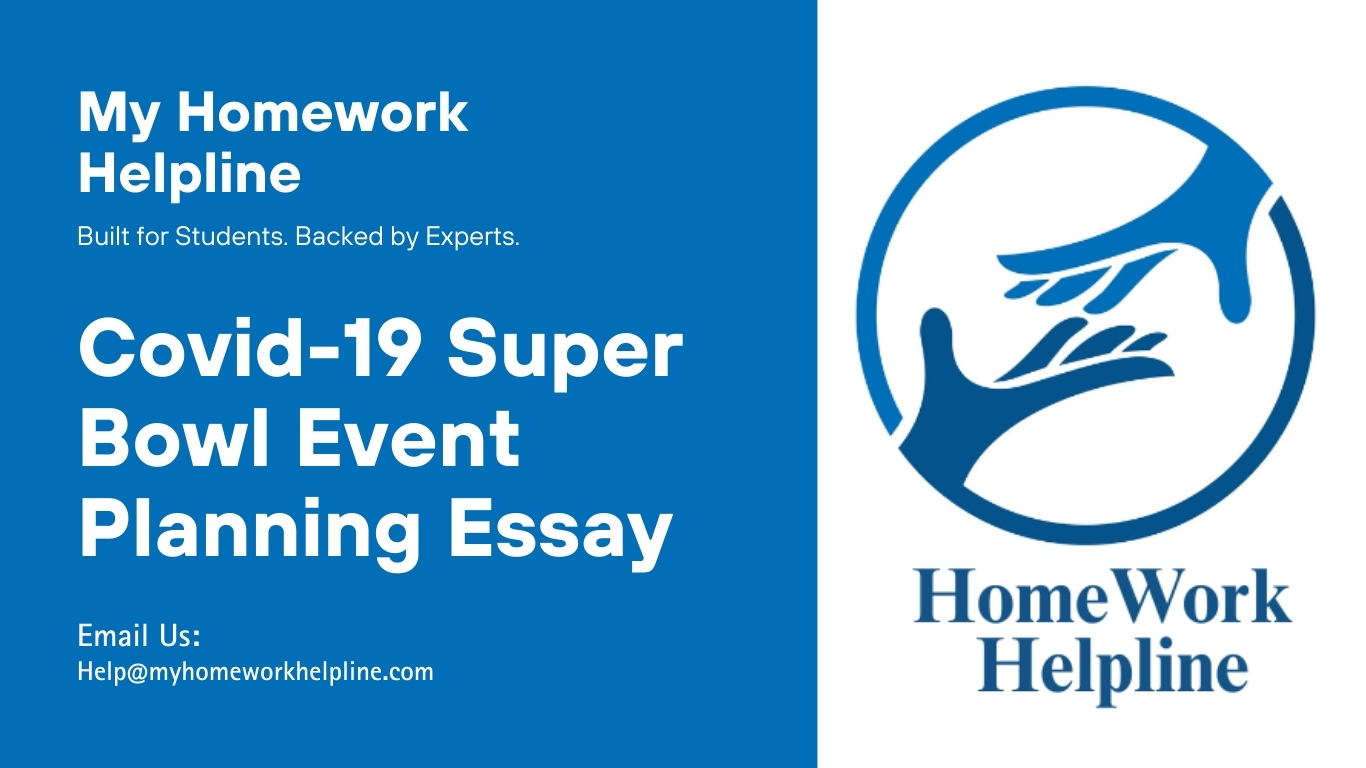Super Bowl Event Management During Covid-19: Planning Essay
Everything nowadays revolves around the Super Bowl. But is that possible when the coronavirus is still at large? It is critical to take sensible precautions against COVID-19. Because Covid-19 and its omicron version continue to be a risk to public health across the United States, many individuals may be tempted to relax their vigilance as they congregate to enjoy the game and engage in social contact. However, if we don’t take precautions, that could be a costly error because the coronavirus is still a serious risk to our health, and we need to keep ourselves safe. During our meetings, we would discuss the following topics to celebrate the Super Bowl safely: the number of people who will be attending, how the event will be hosted (for example, we might think about holding it outside) as per Janahi et al. (pp. 302-307) recommendations, how food will be served in individual containers, the issues connected with wearing masks inside, and the use of hand sanitizer by the food provider and as well our guests.
Do you have an assignment on event management or public health planning? Our experts provide step-by-step guidance on essays, case studies, and Covid-19 related management topics. From risk analysis to food provider considerations, we make academic writing simple and effective. Get professional homework assistance today and boost your grades with reliable, plagiarism-free solutions tailored to your study needs.
My main concern is that the indoor Super Bowl party would draw many people, creating an ideal situation to speed up the spread of new transmission chains when an infected individual visits their parents without realizing it. A highly contagious strain will quickly spread if given a chance. According to surveys and research, about one-third of Americans are concerned about their or a loved one’s health. These people are especially vulnerable to panic due to the unknown nature of the pandemic, particularly its potential duration. The lack of health care resources, such as overcrowded hospitals and a shortage of treatments, is the biggest concern for just under 25% of Americans (Bloem et al., pp. 927-928). Fear, uncertainty, and anxiety are plaguing people worldwide due to the crisis’s massive magnitude and effects. When you factor in the impact of loneliness, lost habits at work and home, cabin fever, and financial uncertainty, it’s easy to see why our mental health is in the dumps.
Works-Cited
Bloem, Bastiaan R., E. Ray Dorsey, and Michael S. Okun. “The coronavirus disease 2019 crisis as catalyst for telemedicine for chronic neurological disorders.” JAMA neurology 77.8 (2020): 927-928. https://jamanetwork.com/journals/jamaneurology/article-abstract/2765073
Janahi, Dania Ahmed, Zahra Abdulsaheb, and Islam Elghonaimy. “The use of attractive lights to encourage the public of using the outdoor areas to control the spreading of COVID 19.” (2021): 302-307. https://digital-library.theiet.org/content/conferences/10.1049/icp.2021.0969

